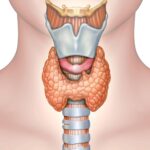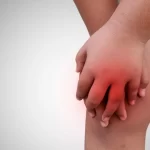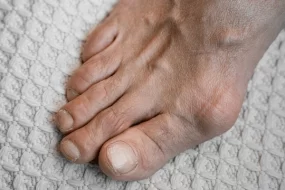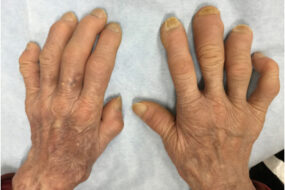- Home
- INTERNAL MEDICINE
- Hypertension

Hypertension is defined as persistently elevated systolic blood pressure (SBP) of 140 mmHg or higher and/or diastolic blood pressure (DBP) of 90 mmHg or higher in adults.
Given its high prevalence and associated morbidity and mortality, hypertension warrants careful diagnosis, risk stratification, and management.
Classification and Diagnostic Criteria
Hypertension is classified based on blood pressure readings taken in a clinical setting:
| Category | Systolic (mmHg) | Diastolic (mmHg) |
| Optimal | <120 | and <80 |
| Normal | 120–129 | and/or 80–84 |
| High Normal | 130–139 | and/or 85–89 |
| Grade 1 Hypertension | 140–159 | and/or 90–99 |
| Grade 2 Hypertension | 160–179 | and/or 100–109 |
| Grade 3 Hypertension | ≥180 | and/or ≥110 |
| Isolated Systolic Hypertension | ≥140 | and <90 |
- Isolated Systolic Hypertension (ISH) occurs when the systolic blood pressure is elevated (≥140 mmHg), but the diastolic blood pressure remains below 90 mmHg. This condition is more common in older adults due to age-related stiffening of the arteries.
- ISH is graded similarly to general hypertension based on the systolic blood pressure values:
- Grade 1 ISH: SBP 140–159 mmHg
- Grade 2 ISH: SBP 160–179 mmHg
- Grade 3 ISH: SBP ≥180 mmHg
Pathophysiology
Hypertension results from complex interactions among genetic, environmental, and physiological factors that influence blood pressure regulation. Key mechanisms include:
Renin-Angiotensin-Aldosterone System (RAAS):
- Dysregulation of RAAS contributes to increased vascular resistance and sodium retention. Angiotensin II promotes vasoconstriction, while aldosterone leads to sodium and water reabsorption in the kidneys, both increasing blood pressure.
Sympathetic Nervous System (SNS) Activation:
- Overactivity of the SNS results in increased heart rate, cardiac output, and peripheral vascular resistance, leading to elevated BP. Chronic activation can cause structural changes in blood vessels and contribute to the development of hypertension.
Vascular Remodeling:
- Chronic high BP causes endothelial dysfunction and structural changes in the blood vessels, such as increased wall thickness and reduced lumen diameter, further elevating vascular resistance.
Renal Dysfunction:
- Impaired renal sodium handling leads to volume overload and increased blood pressure. Factors such as glomerular hyperfiltration, impaired pressure natriuresis, and reduced renal blood flow can contribute to hypertension.
Genetic and Epigenetic Factors:
- Family history of hypertension increases the risk. Specific gene mutations associated with renal sodium reabsorption, RAAS components, and vascular tone regulation have been linked to blood pressure control.
Environmental and Lifestyle Factors:
- Obesity, high sodium intake, alcohol consumption, physical inactivity, and chronic stress significantly contribute to hypertension development.
Clinical Presentation
Asymptomatic Phase:
- Hypertension is often termed the “silent killer” because patients may remain asymptomatic for years. It is usually detected incidentally during routine screening.
Symptoms and Complications:
- When symptoms occur, they may include headaches (especially in the occipital region), dizziness, blurred vision, and palpitations. More severe symptoms may indicate hypertensive emergencies, such as chest pain, shortness of breath, or neurological deficits.
Target Organ Damage (TOD):
- Cardiac: Left ventricular hypertrophy (LVH), heart failure, myocardial infarction.
- Cerebrovascular: Stroke, transient ischemic attack (TIA), cognitive impairment.
- Renal: Chronic kidney disease (CKD), proteinuria.
- Vascular: Peripheral arterial disease (PAD), aortic aneurysm or dissection.
- Retinal: Hypertensive retinopathy, which may present with papilledema, arteriolar narrowing, and retinal hemorrhages.
Diagnostic Evaluation
Blood Pressure Measurement:
- BP should be measured using a validated device, with the patient seated comfortably, feet on the floor, after resting for at least five minutes.
- Multiple readings should be taken on different occasions to confirm the diagnosis. Ambulatory blood pressure monitoring (ABPM) or home blood pressure monitoring (HBPM) can be used to rule out white-coat hypertension or masked hypertension.
Clinical Evaluation:
- History: Assess for symptoms of TOD, lifestyle factors (diet, physical activity, alcohol intake), and family history of hypertension or CVD.
- Physical Examination: Look for signs of TOD, such as carotid bruits, elevated jugular venous pressure, or peripheral edema. Fundoscopy may reveal hypertensive retinopathy.
Laboratory Investigations:
- Basic Tests: Serum electrolytes, creatinine, estimated glomerular filtration rate (eGFR), fasting glucose, lipid profile, and urinalysis and pregnancy test for females
- Advanced Tests: Albumin-to-creatinine ratio for kidney damage assessment, electrocardiogram (ECG) for LVH, echocardiography for structural heart disease, and fundoscopy for retinopathy.

Management Strategies
1. Lifestyle Modifications
Lifestyle interventions are foundational in hypertension management and can significantly reduce blood pressure. Recommended changes include:
- Dietary Approaches:
- The DASH (Dietary Approaches to Stop Hypertension) diet is rich in fruits, vegetables, whole grains, and low-fat dairy while being low in saturated fat and sodium.
- Sodium Restriction: Aim for a daily intake of <2.3 g (100 mmol) of sodium, ideally <1.5 g (65 mmol).
- Potassium Supplementation: Increase dietary potassium through fruits and vegetables to counterbalance sodium effects.
- Weight Reduction:
- Target a body mass index (BMI) of 18.5-24.9 kg/m². A reduction of 1 kg in body weight can lead to a decrease of approximately 1 mmHg in SBP.
- Physical Activity:
- Regular aerobic exercise (e.g., brisk walking) for at least 150 minutes per week.
- Resistance training twice a week is also beneficial.
- Alcohol Moderation:
- Limit alcohol intake to no more than two drinks per day for men and one drink per day for women.

2. Pharmacological Treatment
Pharmacologic therapy should be initiated for patients with persistent elevated BP despite lifestyle modifications or those with Stage 2 hypertension. The choice of medication depends on comorbidities, risk factors, and the presence of target organ damage.
- First-Line Antihypertensive Agents:
- Thiazide Diuretics: e.g., hydrochlorothiazide, chlorthalidone. Effective in volume-dependent hypertension, often seen in older patients and African Americans.
- Angiotensin-Converting Enzyme Inhibitors (ACEIs): e.g., lisinopril, enalapril. Beneficial in patients with diabetes, heart failure, or CKD.
- Angiotensin II Receptor Blockers (ARBs): e.g., losartan, valsartan. Alternative to ACEIs in patients who develop cough as a side effect.
- Calcium Channel Blockers (CCBs): e.g., amlodipine, diltiazem. Particularly effective in older adults and individuals of African descent.
- Beta-Blockers: e.g., metoprolol, carvedilol. Used for specific indications such as CAD, heart failure, or arrhythmias.
- Second-Line and Adjunctive Agents:
- Aldosterone Antagonists: e.g., spironolactone. Useful in resistant hypertension.
- Alpha-Blockers: e.g., doxazosin. Mainly used for coexisting benign prostatic hyperplasia (BPH).
- Direct Vasodilators: e.g., hydralazine. Reserved for severe hypertension unresponsive to other agents.

Stepwise approach to titrating antihypertensive medication
Step 1
- Initial Treatment:
- Start with a dual low-dose combination of antihypertensive agents. The recommended combinations include:
- Calcium Channel Blocker (CCB) + Thiazide Diuretic (TD)
- CCB + Angiotensin-Converting Enzyme Inhibitor (ACEI) or Angiotensin II Receptor Blocker (ARB)
- ACEI/ARB + TD
- Monotherapy Consideration:
- May be considered for low-risk patients, Grade 1 hypertension (SBP <150 mmHg), or elderly (≥80 years) frail patients.
Step 2
- Escalation if BP Not Controlled:
- Move to a dual high-dose combination using the same drug classes as in Step 1.
Step 3
- Further Treatment Intensification:
- Use a triple combination of antihypertensive agents:
- CCB + TD + ACEI/ARB
Step 4
- Additional Add-On Therapy:
- Consider triple therapy with adjunct agents:
- Mineralocorticoid Receptor Antagonists (MRAs) like spironolactone
- Beta-blockers, centrally acting agents (e.g., methyldopa, clonidine), direct vasodilators (e.g., hydralazine, minoxidil), or alpha-blockers (e.g., prazosin, doxazosin)
- Beta-blockers can be included at any treatment stage if indicated for conditions like heart failure, angina, acute coronary syndrome (ACS), or atrial fibrillation.
This stepwise titration aims to achieve optimal blood pressure control while minimizing adverse effects.
3. Management of Hypertensive Emergencies
Hypertensive emergencies require immediate reduction of blood pressure to prevent or limit target organ damage. Intravenous antihypertensive agents such as sodium nitroprusside, labetalol, or nicardipine are commonly used in critical care settings.
Special Considerations
Resistant Hypertension:
- Defined as BP that remains above goal despite the concurrent use of three antihypertensive agents, including a diuretic. Evaluation should include assessment for secondary causes (e.g., renal artery stenosis, primary aldosteronism, obstructive sleep apnea).
Secondary Hypertension:
- Accounts for about 10% of cases. Common causes include renal parenchymal disease, renovascular hypertension, primary aldosteronism, pheochromocytoma, and Cushing’s syndrome.
Hypertension in Special Populations:
- Diabetics: Target BP <130/80 mmHg if tolerated. ACEIs or ARBs are preferred for renal protection.
- Pregnancy: Use labetalol, methyldopa, or nifedipine. Avoid ACEIs, ARBs, and direct renin inhibitors due to teratogenicity.
- Elderly: Focus on systolic BP reduction and monitor for orthostatic hypotension.
Future Directions
- New Pharmacological Agents: Drugs targeting novel pathways such as endothelin antagonists and nonsteroidal mineralocorticoid receptor antagonists are under investigation.
- Genetic and Biomarker Research: May lead to personalized antihypertensive therapy based on genetic profiling.
- Device-Based Interventions: Renal denervation and baroreflex activation therapy are emerging techniques for resistant hypertension.












